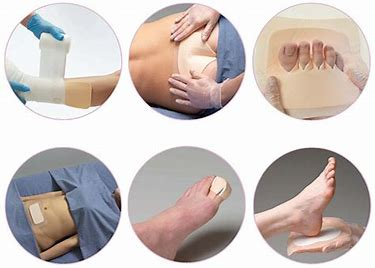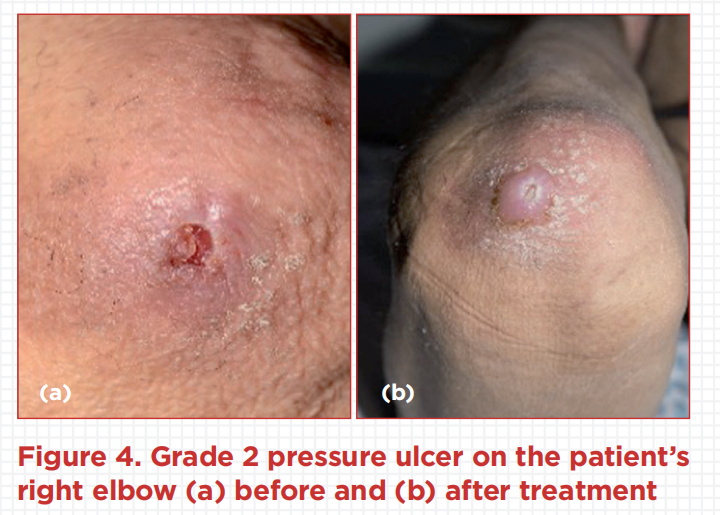
Privacy statement: Your privacy is very important to Us. Our company promises not to disclose your personal information to any external company with out your explicit permission.

 January 23, 2024
January 23, 2024
Abstract:This article discusses the use of a foam dressing for exudate management in both chronic and acute wounds, such as surgical wounds, pressure ulcers, diabetic ulcers, trauma wounds, and leg ulcers. The primary objective of the study was to observe patients’ wound progression in terms of wound size and the condition of the wound bed, when using this foam dressing as either a primary or secondary dressing. The outcome of the evaluation demonstrated that Foam Contact dressing effectively managed exudate. It was also observed that the dressing can assist in autolysis and support improvements in peri-wound status. Choosing an appropriate dressing to manage a wound is essential.
Keywords:exduates,wounds,foam dressing,effectiveness,wound healing.
INTRODUCTION:
In chronic wounds, the exudate becomes persistent and can contain substances that are detrimental to and could suppress the wound-healing process. In such wounds, the exudate becomes unhealthy with high levels of inflammatory mediators and activated matrix metalloproteinases (MMPs), which can damage the wound bed and intact peri-wound skin . The excess exudate volumes are often related to abnormally raised protease levels, which can impede healing by degrading the newly formed extracellular matrix. It is important to recognise that the volume of exudate is related to the surface area of the wound; therefore, large wounds often produce higher volumes of exudate . If a wound produces high levels of exudate and is not managed appropriately, the wound bed will become over-hydrated, causing moisture to leak onto the peri-wound skin, and maceration and wound enlargement become a major risk.
Foam dressings continue to be important in wound care and have a place for the treatment and management of chronic wounds, particularly where exudate is problematic. The provision of a moist, warm, wound-healing environment and good exudate-handling properties are essential when treating patients with chronic wounds, and foam dressings are one of the best available treatments . Foams are generally made from polyurethane that has been treated to provide a smooth contact surface. They provide thermal insulation, do not shred fibres or particles, and are gas permeable. There are many foam dressings available today, all of which can absorb exudate in various ways. Many foams absorb exudate into the foam; some have the capacity to wick horizontally, thus increasing absorbency of fluid as it spreads through the whole dressing. Some foams are able to breathe off the moisture that they absorb through a permeable backing. This increases the capacity of the dressing, and is referred to as the moisture vapour transfer rate (MVTR). Thomas also concluded from a study testing foams that, although absorbency is important in foam dressing performance, the moisture-vapour permeability of a dressing plays a key role in determining its total fluid-handling capacity.
Case:
A 77-year-old female was admitted for exacerbation of chronic obstructive pulmonary disease (COPD). The patient had a history of pulmonary vascular disease (PVD) andresiratory disease. She was found to have a grade 2 pressure ulcer on her right elbow (Figure 4a) on admission, which scored 3 on the Wong Baker pain score. The wound presented with granulating tissue and the surrounding skin had some excoriation. The wound measured 2 cm long and 1 cm wide. Following a wound assessment, Foam Dressing was applied to absorb exudate and promote a moist wound-healing environment along with pressure relief. No other wound care products were used. The dressing was changed twice a week and was easy to apply and remove. It was comfortable and conformable for the patient. The wound was fully epithelialised within a week (Figure 4b) and at the time of discharge home.

Conclusion:
The clinical treatment effect shows that the foam dressing contains a polyurethane foam which can quickly and vertically absorb a large amount of exudate, and can better improve the wound exudation. Secondly, foam dressings are convenient and comfortable to use, and patients are highly satisfied with different acute wounds and chronic wounds.
Bullough, L., Johnson, S., & Forder, R. (2015). Evaluation of a foam dressing for acute and chronic wound exudate management. British journal of community nursing, 20(Sup9), S17-S24.

Privacy statement: Your privacy is very important to Us. Our company promises not to disclose your personal information to any external company with out your explicit permission.

Fill in more information so that we can get in touch with you faster
Privacy statement: Your privacy is very important to Us. Our company promises not to disclose your personal information to any external company with out your explicit permission.